20+ Grinding Wheel Types | How To Choose
What is Grading Wheel
Grinding wheel is the most important grinding tool in grinding operation. Grinding wheel is a porous body made by adding binder to abrasive, compacting, drying and roasting. Due to different abrasives, binders and manufacturing processes, the characteristics of grinding wheels vary greatly, so it has an important impact on grinding quality, productivity and economy. The characteristics of grinding wheel are mainly determined by abrasive, particle size, binder, hardness, structure, shape and size and other factors.
20+ Grinding Wheel Types [PDF DOWNLOAD]
Grinding Wheels Types and Their Applications
In actual industrial production, there are many different types of grinding wheels, which can be classified according to abrasive, binder, shape and grinding effect. The details are as follows:

I. Types On Basis of Abrasive
- ① Ordinary Grinding Wheel(silicon carbide / corundum grinding wheel): suitable for processing cast iron, hard alloy, titanium alloy, high-speed steel, grinding glass, ceramics, stone, agate and other non-metallic materials.
- ② Superhard Abrasive Wheel (CBN / diamond grinding wheel): it is mainly used for efficient grinding of hard machining materials such as cemented carbide, glass and ceramics, and the grinding tool has the longest service life.
II. Types On Basis of Binder
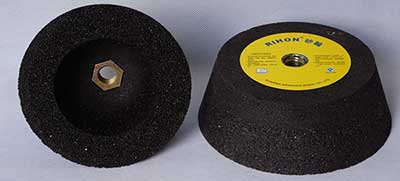
- ③ Resin Grinding Wheel: it is a grinding wheel made of resin with high strength, which is used in cutting blade, polishing wheel, etc. It is widely used in rough grinding, rough grinding, cutting and free grinding, such as grinding ingots, burring castings, etc.
- ④ Ceramic Grinding Wheel: the most widely used grinding wheel, which is suitable for outer circle, inner circle, plane, centerless grinding and form grinding.
- ⑤ Rubber Grinding Wheel: suitable for centerless grinding guide wheel and polishing grinding wheel.
III. Types On Basis of Grinding Position
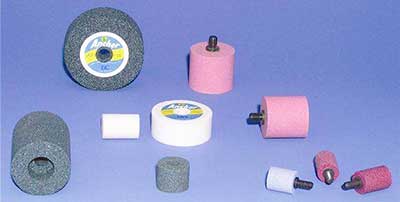
- ⑥ Internal Grinding Wheel
- ⑦ Grooved Grinding Wheel
- ⑧ Cylindrical Grinding Wheel
- ⑨ End Grinding Wheel
- ⑩ Side Grinding Wheel
IV. According To Grinding Effect
- ⑪ Fine Grinding Wheel
- ⑫ Rough Grinding Wheel
- ⑬ Semi Fine Grinding Wheel
V. According To Grinding Wheel Shape
- ⑭ Flat Grinding Wheel: mainly used for external grinding, internal grinding, surface grinding, centerless grinding, thread grinding, free grinding, etc.
- ⑮ Double Bevel Grinding Wheel: mainly used for grinding gears, tooth surfaces, single thread, grinding circles and grinding end faces.
- ⑯ Single Bevel Grinding Wheel: mainly used for grinding various sawtooth, grinding milling cutter, reamer, gear shaper cutter, etc.
- ⑰ Single Side Convex Grinding Wheel: it is mainly used to solve the manufacturing difficulties of grinding wheel with large diameter and thin thickness. Its purpose is the same as that of flat grinding wheel.
- ⑱ Single Side Concave Grinding Wheel: it is mainly used for inner circle grinding and surface grinding, and outer circle grinding is used for larger outer diameter.
- ⑲ Double Sided Concave Grinding Wheel: it is mainly used for cylindrical grinding and cutting tool grinding, as well as grinding wheel and guide wheel of centerless grinding.
- ⑳ Cylindrical Grinding Wheel: mainly used for vertical shaft plane grinding.
- ㉑ Cup Shaped Grinding Wheel: mainly used for grinding milling cutter, reamer, reamer, broach, paper cutter, etc. it can also be used for plane and inner circle grinding.
- ㉒ Bowl Shaped Grinding Wheel: mainly used for grinding milling cutter, reamer, broach, disc turning tool, gear shaper cutter, reamer drill, etc. it can also be used for grinding machine guide rail, etc.
- ㉓ Dished Grinding Wheel: mainly used for grinding milling cutter, reamer, broach, gear shaper cutter and other cutting tools, and large-size ones are generally used for grinding gear tooth surface.

8 Major Tips Help To Choose Grinding Wheel
In order to choose the most suitable grinding wheel for the current work, many factors must be considered.
① Grinding Material
This determines the type of abrasive required by the grinding wheel. For example, when grinding steel or alloy steel, alumina or zirconia alumina should be used for grinding. Silicon carbide abrasive will be selected for grinding cast iron, non-ferrous metal and non-metallic materials.
Hard and fragile materials usually require grinding wheels with finer particle size and soft hardness. Because hard materials will resist the cutting of abrasive particles and make them blunt easily. Therefore, the combination of fine particle size and soft hardness can quickly remove the abrasive particles when they become blunt, and immediately expose sharp and sharp new abrasive particles. In contrast, for soft, easy to extend and easy to cut materials, coarse-grained and hard grinding wheels should be selected.
② Removal Amount
Coarse grained Abrasives can quickly cut off the volume of the workpiece because they have greater penetration and greater cutting force. However, for materials that are difficult to cut, if the grinding wheel is finer, the cutting efficiency will be better, because there are more sharp points to cut.
Ceramic bonded grinding wheel with high cutting efficiency. However, if the removal amount is expected to be small or the surface roughness is required to be high, the grinding wheel with resin, rubber or shellac adhesive shall be selected.

③ Grinding Wheel Speed
Generally, the service speed of ceramic bonded grinding wheel will be lower than 6500ft / min. (33m / s) if the speed is too high, the ceramic bond will break.
The use speed of grinding wheel with organic bond is about 6500 ~ 9500ft / min per minute. (33 ~ 48m / s) if you want to operate at a higher speed, you need a specially prepared high-speed grinding wheel to carry out high-speed grinding.
In any case, do not exceed the maximum safe linear speed marked on the grinding wheel. The unit may be rpm or surface ft / min per minute (commonly used in Taiwan is m / S = m / s)
④ Grinding Contact Area
The contact area is large, and coarse-grained and soft grinding wheel will be used. This ensures that normal and relatively low temperature grinding can still be maintained under large-area grinding with large resistance load. If the grinding area is small, a fine-grained and high hardness grinding wheel will be used to bear a large unit pressure.
⑤ Severity of Grinding Workpiece
It refers to the pressure between the grinding wheel and the workpiece. Some abrasives are designed for grinding steel or alloy steel to withstand more stringent grinding conditions.

⑥ Power of Grinder
Usually, the harder grinding wheel needs to use a grinding machine with high power. If the power is less than the diameter of the grinding wheel, use a softer grinding wheel. If the power is greater than the diameter of the grinding wheel, select a harder grinding wheel.
⑦ Select Qualified Grinding Wheel
According to the marks pasted on the grinding wheel, check whether the abrasive, binder, particle size, structure, hardness, shape and size of the grinding wheel meet the use requirements. Any grinding wheel has a certain period of validity. If it is used within the period of validity, it is a qualified grinding wheel; If it is used beyond the validity period, it is not necessarily a qualified grinding wheel.
In the process of use, if cracks are found in some parts of the grinding wheel, it shall be stopped immediately and replaced with a new grinding wheel to avoid the accident of crushing and wounding people.
⑧ Grinding Effect Requirements
During rough grinding, in order to improve productivity, the grinding wheel with small particle size and soft size should be selected. When the precision is high, in order to improve the surface quality of the workpiece, the grinding wheel with large particle size and hard should be selected.
When grinding large area or thin-walled parts, the grinding wheel with small particle size, large organization number and soft structure should be selected. In this way, the grinding wheel is not easy to block, the workpiece surface is not easy to burn, and the workpiece is not easy to deform.
The grinding wheel with large grain size, small organization number and hard structure shall be selected for form grinding to maintain the profile of the grinding wheel.
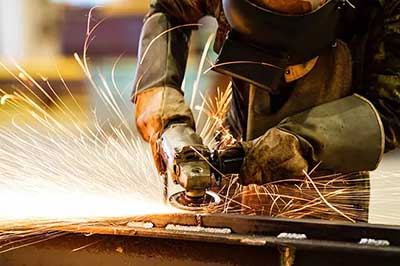
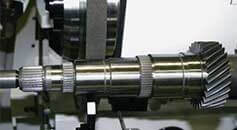 Grinding Wheel Fracture Problems & Solutions
Grinding Wheel Fracture Problems & Solutions Bucket Elevator | Structure & Types| How To Choose
Bucket Elevator | Structure & Types| How To Choose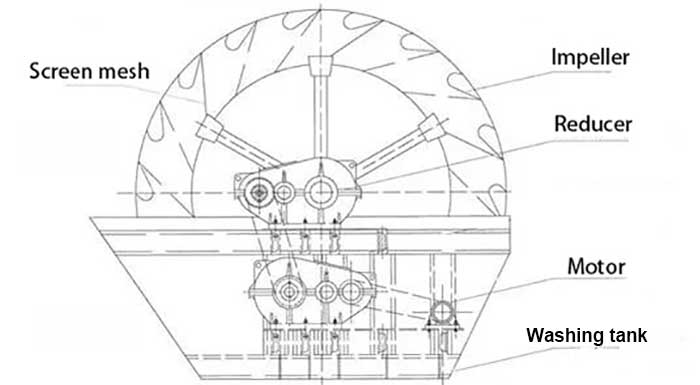 Is Wheel Sand Washer Better Than Spiral Sand Washer ?
Is Wheel Sand Washer Better Than Spiral Sand Washer ? 20 Types of Excavator Buckets and How To Choose A Suitable Bucket
20 Types of Excavator Buckets and How To Choose A Suitable Bucket

